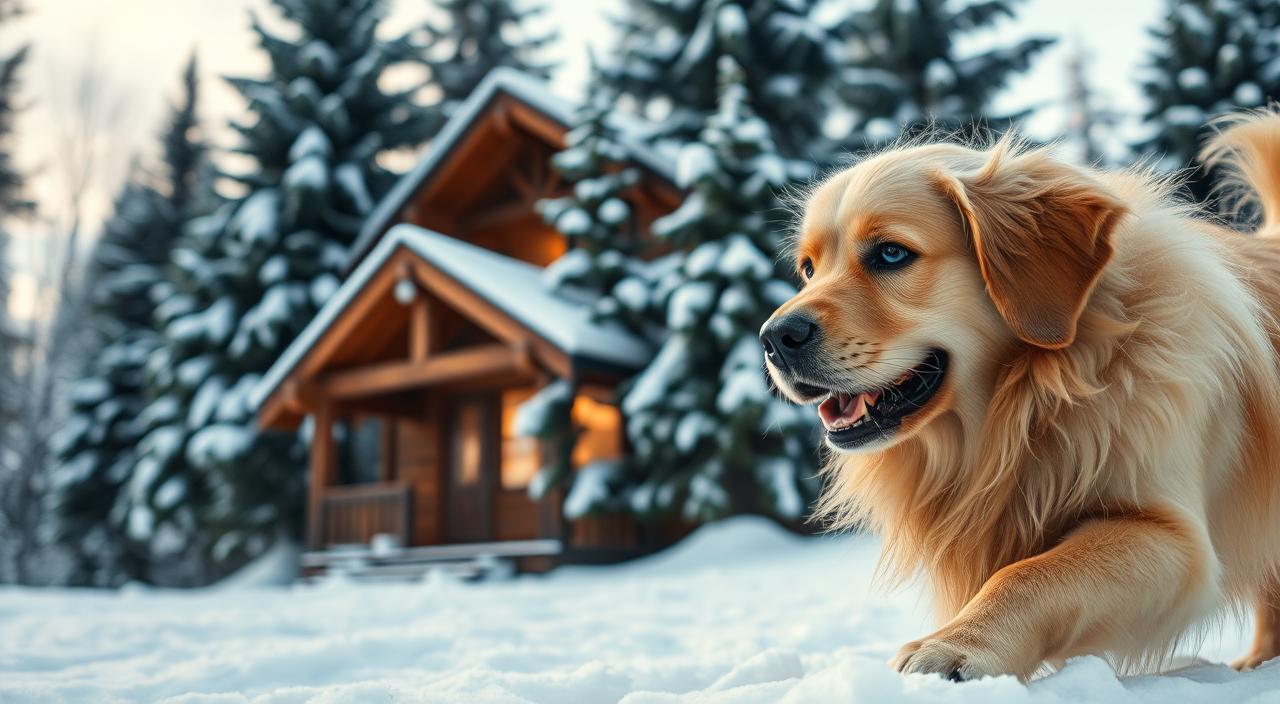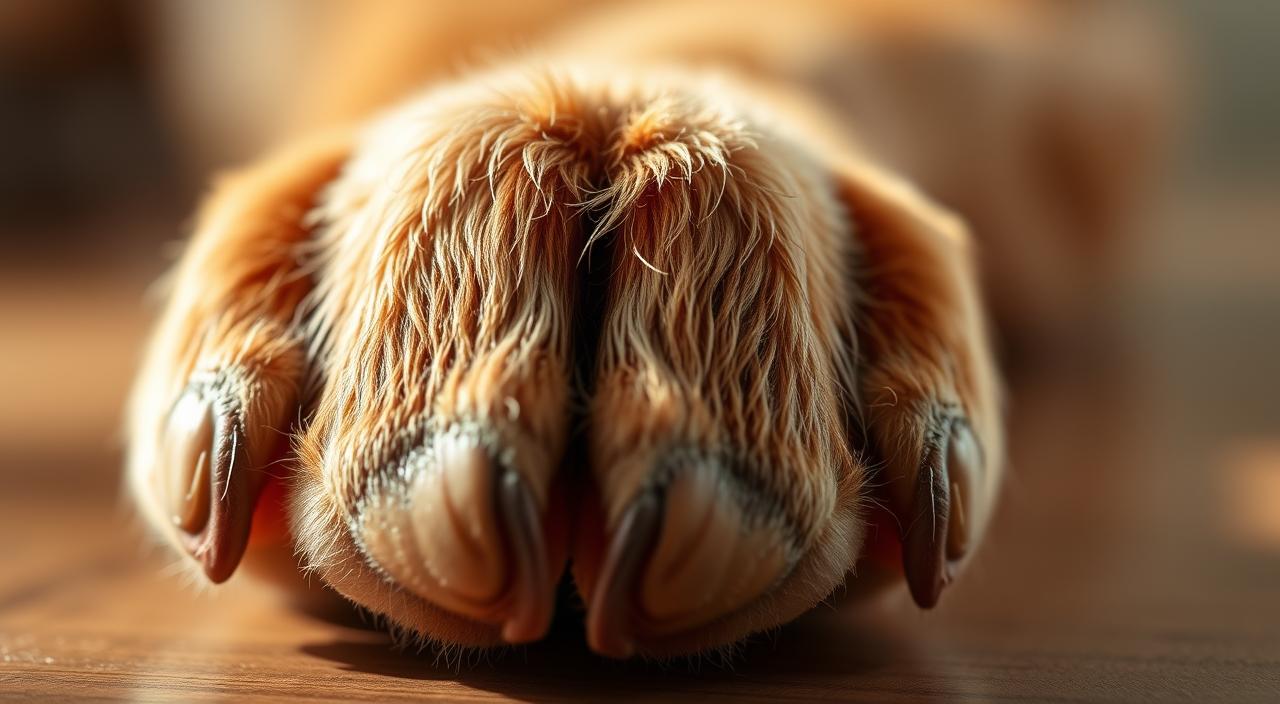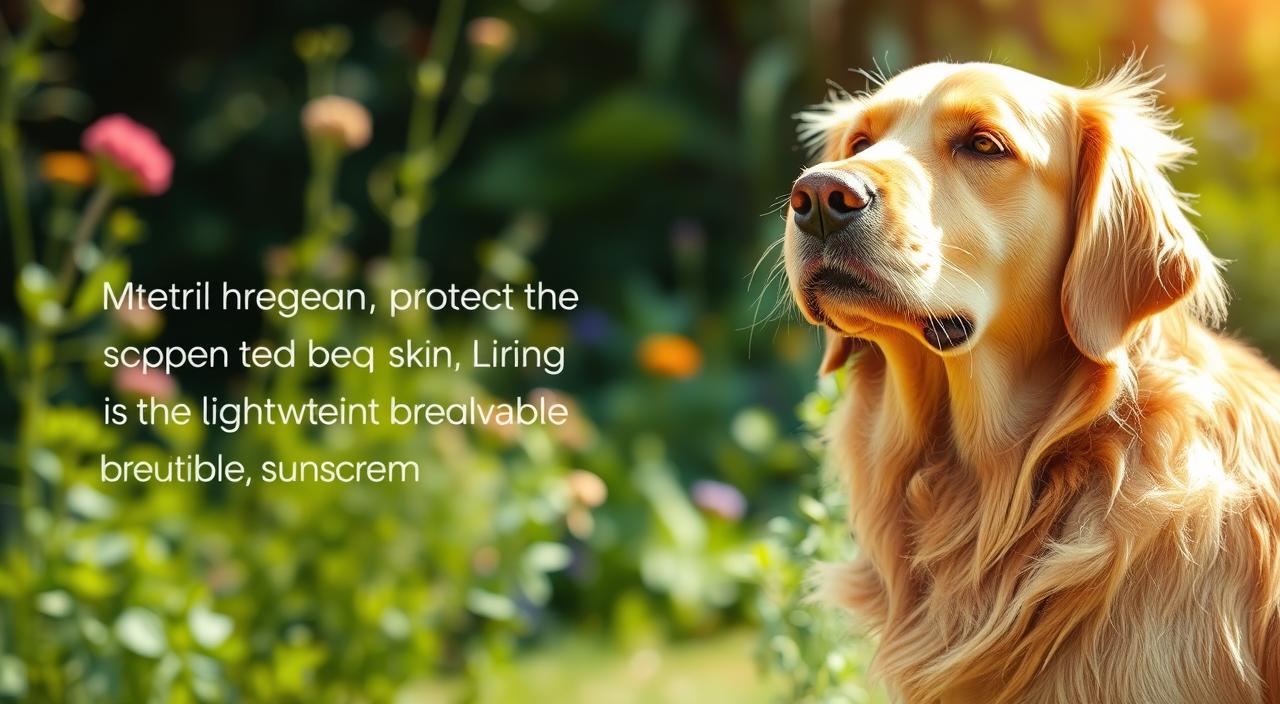You may worry about how to protect dog’s coat in winter when cold snaps make walks risky, and you want simple steps that keep your pet safe and warm.
A dog’s fur alone is not enough for long outdoor exposure. Extremities—ears, paws, tails—lose heat fast and can suffer frostbite. If temperatures drop near 20°F, shorten outside time and add sweaters or booties during brief play.
This short guide explains a practical way to build a routine: coat care, paw checks, dressing, and spotting unsafe weather. We outline grooming tips, product choices, and quick checks that stop small problems from growing into painful issues.
Not all dogs react the same—size, age, coat type, and health change how cold affects them. With clear steps you can make sure your dog keeps mobility, comfort, and warmth all season without extra stress.
Key Takeaways
- Fur alone won’t prevent frostbite—protect ears, feet, and tails.
- Limit outdoor time when temperatures fall toward freezing or below.
- Moisturize skin and avoid over-washing to retain natural oils and warmth.
- Simple checks after walks—paw inspection and a warm resting spot—help quickly.
- Adjust care by your dog’s size, age, and coat for best protection.
Why winter conditions demand extra care for your dog’s coat and skin
When temperatures drop, a short outing can become risky for many dogs without extra attention. Cold air and low humidity draw moisture from skin and fur, which weakens the natural insulation that keeps body heat inside.
Different breeds and fur types respond very differently. Double-coated breeds trap warmth more effectively, while short-haired or thin-coated breeds lose heat faster. Small dogs, pups, seniors, and ill animals have less reserve and chill quickly.
Practical temperature cues and early warning signs
Plan shorter non-active periods near 30°F. At about 20°F or below, limit outside time to brisk play with extra layers and booties. Wind, wetness, snow, and ice remove heat faster than the thermometer suggests.
- Early signs: shivering, lifting paws, whining, hunched posture, tail tucked, or refusing a walk.
- Emergency signs of hypothermia: weakness, stiff muscles, a staggering gait, confusion, or loss of consciousness—seek immediate warming and veterinary care.
Watch every walk and adjust plans based on footing, conditions, and how your pet responds. Small steps now prevent larger risks later.
How to protect dog’s coat in winter
Small changes—brushing, moisturizing, and a snug outer layer—help dogs retain body heat during chilly weather.
Start with a gentle brush session: de-tangle and remove mats so the fur can trap warm air again. A freshly groomed coat works as a better insulating layer and helps keep dog comfortable on short outings.
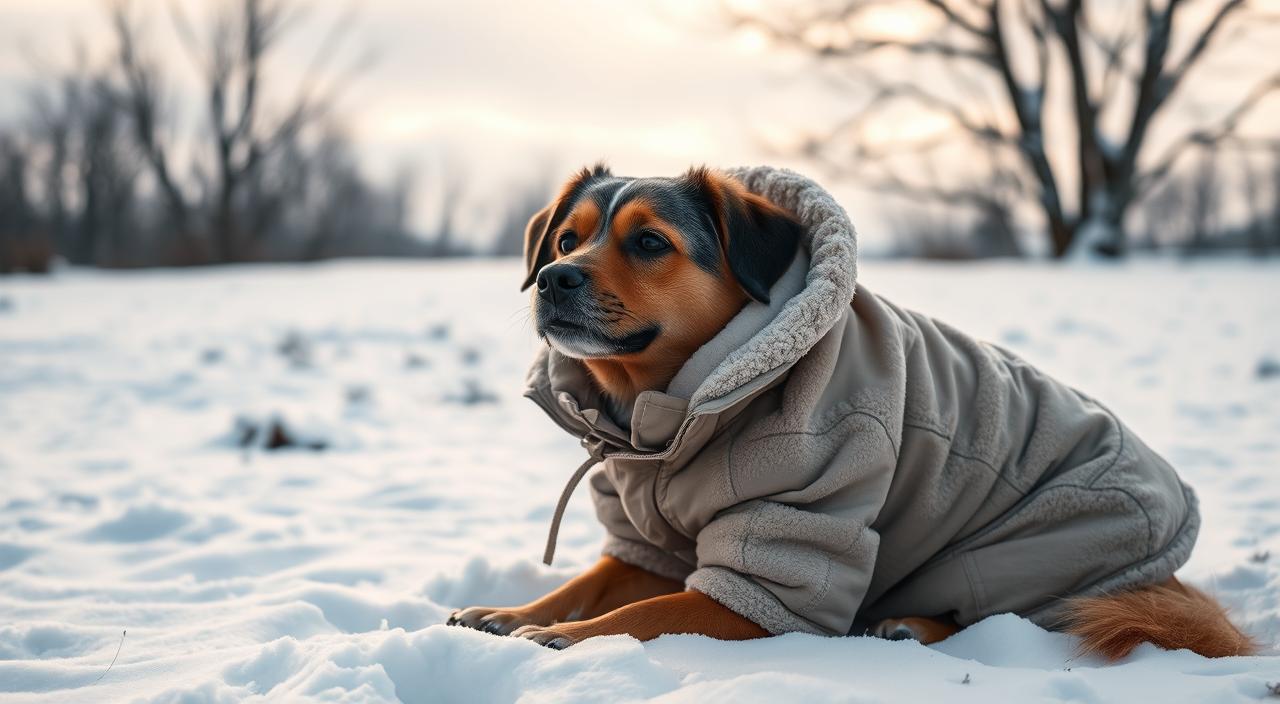
Switch to moisturizing shampoos and conditioners that support skin oils. Spacing full baths reduces dryness; rinse paws and belly after salty walks instead of frequent shampooing.
- Brush regularly to restore loft and insulation.
- Use a moisturizing wash and condition routine for healthy skin and less static.
- Add a well-fitted winter layer when temperature and wind lower perceived heat.
- Dry paws and belly quickly after snow contact and apply a thin balm on nose and paw edges.
- Plan outings during the warmest part of the day and shorten time when conditions worsen.
Keep indoor air a bit more humid; a humidifier helps skin stay supple so the coat keeps working as an insulating way between trips outside. For extra tips about seasonal shedding and fur care, see this guide on ways to reduce shedding: reduce shedding.
Build a cold‑season coat care routine that locks in warmth
Regular care—timely brushing and mindful bathing—locks a fur layer in place so a pup loses less heat. A steady routine helps keep body warmth and lowers the chance of dry, irritated skin during chilly days.
Smart grooming: brushing, de‑matting, and avoiding over‑bathing
Create a weekly brushing plan. Use a slicker brush and a comb to lift loose hair and remove mats. This restores the insulating layer and helps keep heat from escaping.
De‑mat before bathing. Wet mats tighten and pull on skin, so detangle gently first. That way, washing improves the coat’s function instead of damaging it.
Avoid over‑bathing during winter. Frequent washes strip natural oils. Rinse legs and belly between full baths to remove salt and grime without drying the skin.
Moisturizing shampoos and conditioners to fight dry skin and static
Choose moisturizing shampoos and leave‑in conditioners made for dogs. These products support skin oils and reduce static, which helps the coat lie flat against cold air.
- Dry the coat completely after walks: towel, then a low‑heat dryer at a safe distance to prevent trapped dampness that cools the body.
- Trim only where needed—tidy feathering around legs and belly but avoid shaving natural protection.
- Keep a small kit by the door: towel, paw cloth, detangler, and a quick booties check so you can make sure outings stay comfortable.
Paw and pad protection on snow and ice
A quick winter check of paws keeps most small problems from turning into painful injuries. Brief daily care limits cracking, packed snow, and irritation from road grit.
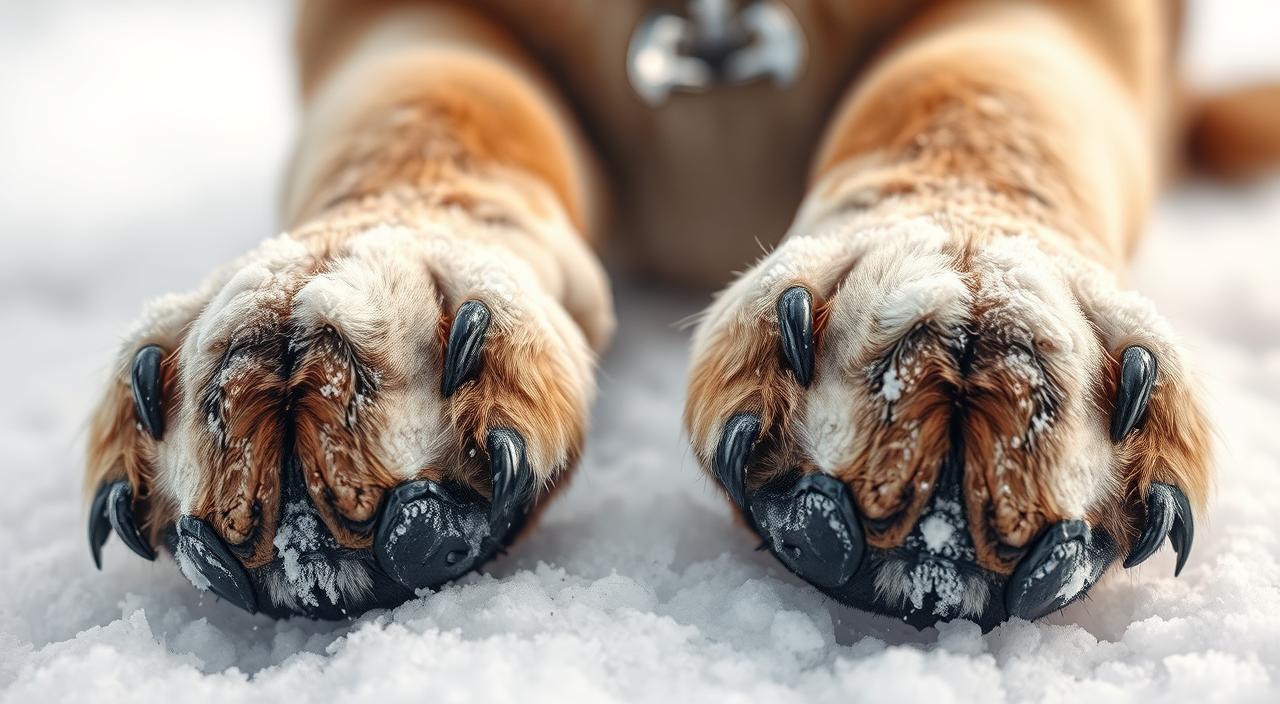
Booties versus paw wax: choosing the right option for your pup
Booties or boots provide full coverage on deep snow or icy streets. Paw wax is an option for short strolls when speed and grip matter.
Dealing with salt chemicals, ice melt and packed snow between toes
Use pet-safe ice melt such as Safe Paw PetSafe Ice Melt rather than harsh salt chemicals. Trim excess fur and clear packed snow from between toes after each outing.
Daily paw checks: where to look and what to treat before it worsens
Inspect paw pads, webbing, and nail bases for splits, redness, or debris. Rinse with lukewarm water and dry thoroughly if salt or grit is present.
| Protection | Best use | Pros | Cons |
|---|---|---|---|
| Booties / boots | Long walks, deep snow | Full cover, prevents packing | Needs fit test; learning curve |
| Paw wax | Short outings, quick barrier | Fast application, improves grip | Less effective on heavy snow |
| Rinse & balm | After exposure at home | Removes salt; soothes pads | Needs routine application |
Dress, timing, and activity: keeping body heat up outdoors
A clear plan for clothing, movement, and short breaks helps dogs stay warm during chilly outings.
When a winter coat or full‑body suit makes sense
Choose clothing by activity and conditions. A coat or full‑body suit is a good option for a pup that chills easily or faces steady wind.
Booties and boots add traction and block ice and salt around paws. Fit matters: gear should allow a natural gait without chafe.
Temperature, wind, and wetness: time‑outside guidelines
On sunny, calm days near 30°F most dogs feel cold if not active. At 20°F or below, limit outings to brisk, purposeful trips with a sweater and booties.
Wind and wet fur increase heat loss quickly. Shorten time outside and add layers when gusts, sleet, or melting snow are present.
Rest stops: insulation from ground, warming up, and rehydration
- Lay a foam mat or blanket so a dog rests off frozen ground and keeps warmth in the body.
- Build heat through steady movement—walk or light jog—and pause to check ears, tail carriage, and paws.
- Bring water and small snacks: dogs use extra energy in cold weather and need brief refuels.
End each trip by drying the pup with a towel and giving a warm spot indoors so residual chill does not linger.
Home and travel readiness for cold weather
A few small changes at home and on the road make a big difference for dogs when temperatures fall. Keep the living area comfortably warm: if people feel chilly, pets likely do as well.
Indoor warmth, hydrated skin, and calories on frigid days
Set up warm rest areas with elevated or insulated beds away from drafts. Reflective or supervised heated bedding is an option for extra warmth.
- Hydrate the air and the pet: use a humidifier and offer fresh, slightly warmed water often to help skin and body function.
- Feed for the season: modest calorie increases and slightly warmed meals with low-sodium broth can encourage appetite on very cold days.
- Plan safe travel: never leave a dog unattended in a vehicle—rapid cooling creates a real hypothermia risk even during short errands.
- Power outage playbook: bundle pets with blankets, place safe hand warmers inside bedding (not directly on skin), and relocate if the home can’t stay warm.
- Keep an entryway kit: towels, a shallow rinse, and balm help clean and soothe pads after walks and reduce winter irritants.
- Choose pet-safe de-icers for driveways and entry paths to lower chemical exposure while keeping traction.
- Maintain indoor routines: short play and training sessions raise body heat and keep pets engaged between outdoor trips.
For product tips that help protect dog paws and coat health during the season, see this guide on supplements and shedding care: best supplement to stop dog shedding.
Conclusion
<!– Meta: –>
Clear, consistent habits make cold-season care manageable and keep dogs safe on brisk days.
Combine smart grooming, moisture support, and the right layers as the core way to protect dog comfort and mobility. Match boots and clothing to temperature and wind, and shorten walks when weather or footing lowers safety.
Make daily paw care a quick habit: inspect paw pads, clear packed snow from between toes, and rinse feet after exposure to chemicals. Remember breeds, size, and individual tolerance differ—adjust plans to the dog you have rather than the number on a thermometer.
Treat wind, wetness, snow, and ice as amplifiers of cold weather. End trips by drying thoroughly, offering water, and settling the pet on a warm, insulated spot. With these steps, winter can be a season of safe walks and confident care.

